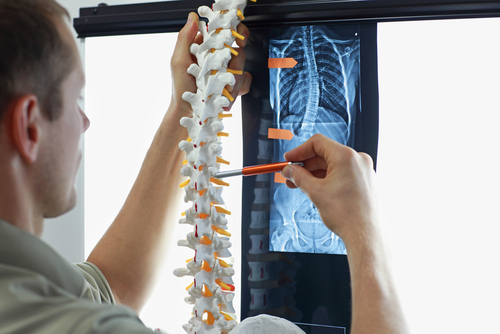Gender-specific Predictors of AS Spinal Radiographic Progression Identified in 5-Year Study

Risk factors of new spinal bone formation in patients with ankylosing spondylitis (AS) partially differ between men and women, according to a five-year Swedish study.
The study, “A five-year prospective study of spinal radiographic progression and its predictors in men and women with ankylosing spondylitis,” was published in the journal BMC.
AS is characterized by pathological new bone formation and spinal inflammation, which can lead to spinal stiffness and loss of mobility. The development of syndesmophytes — bony outgrowths attached to ligaments — are also characteristics of AS.
Conventional X-rays and the modified Stoke Ankylosing Spondylitis Spinal Score (mSASSS) — a four-point radiographic scoring system for the lumbar and cervical spine regions — are the most commonly used methods to assess and quantify chronic spinal alterations in AS patients.
Several studies involving a variety of available clinical tools have suggested that spinal alterations develop faster and more aggressively in men. Based on this, the researchers believe that “predictors should be studied separately for men and women in the same setting.”
To do this, a team researchers in Sweden conducted an observational study (NCT00858819) to assess spinal radiographic progression in patients with AS and to investigate predictors for progression overall as well as by gender.
A total of 204 patients, recruited from rheumatology clinics in Sweden, participated in the initial study protocol and then invited to take part in a five-year follow-up. Of these patients, 166 had completed all the examinations at the five-year mark — 89 men and 77 women. All patients were diagnosed with AS according to the modified New York criteria — an approach that combines clinical and radiological criteria to evaluate chest and spinal mobility.
Questionnaires, physical examinations, and X-rays were given to all patients both at the beginning and end of the study. Questionnaires included information about medical history, medication, occupation, and smoking habits.
BMI (body mass index) as well as Bath AS indexes — measurements that help clinicians accurately characterize AS — were also part of the examinations.
Blood samples were taken every year over the five-year period. Values for erythrocyte sedimentation rate (ESR) — a test that measures how fast red blood cells settle in a tube — were used to assess inflammation levels. In cases of inflammation, the presence of proteins such as the C-reactive protein (CRP) will make red blood cells sink faster. High values of CRP are, for example, associated with high risk of heart attack or stroke.
An analysis of X-rays conducted during the study revealed an overall increase in mSASSS in both men and women (from 13.9 to 15.4 units). However, the mean progression was higher in men (1.9 versus 1.2 for women).
Development of new syndesmophytes was observed in 22% of the patients, 75% of whom were men.
Obesity was found to be a predictor for both sexes: “Obesity is associated with higher bone mineral density (BMD) in the general population, this being attributed to greater mechanical loading and hormones,” according to the authors.
Smoking, obesity, and high CRP values at the start of the study were indicators of disease progression in men.
In women, a high Bath AS Metrology Index score was an indicator of spinal mobility — and exposure to osteoporosis therapies (bisphosphonates) were identified as predictors for disease progression.
The use of anti-inflammatory compounds did not significantly affect spinal progression.
“In order to decrease radiographic progression in the spine we propose the supporting of weight loss in obese patients, counseling on the hazardous effect of smoking and treatment of active inflammation,” the authors concluded.






